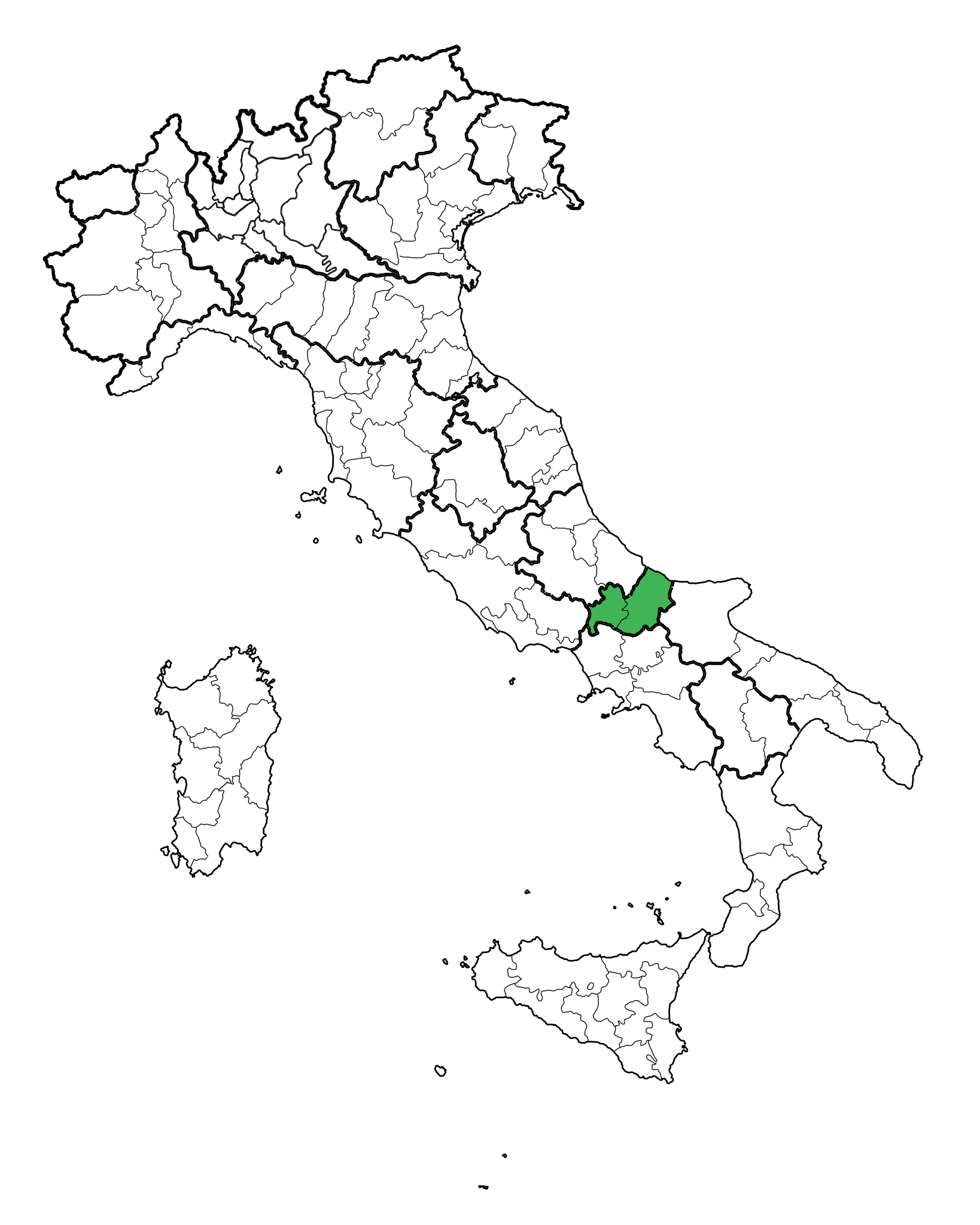
/molˈize/
- Falanghina
- Trebbiano Abbruzzese
- Montepulciano
- Sangiovese
- Tintilia
- Viticulture has been practiced in Molise since ancient times, with evidence of grape cultivation dating back to the Roman era. The region’s long history of winemaking is reflected in its traditional grape varieties and winemaking techniques.
- Molise’s terroir is characterized by hilly terrain, with vineyards planted at varying altitudes. The region’s soils range from clay and limestone to volcanic deposits, imparting distinct flavors and characteristics to its wines.
- Molise is one of Italy’s smallest wine regions, but it boasts a rich winemaking tradition that dates back centuries. Despite its size, Molise produces a diverse range of high-quality wines.
- Biferno DOC
- Molise DOC
- Tintilia del Molise DOC
Molise is characterized by its rugged and mountainous terrain, with the Apennine Mountains running through the region. These mountains provide a diverse range of altitudes and microclimates ideal for viticulture.
Much of Molise’s wine production occurs on hillside vineyards, where grapes benefit from ample sunshine, good drainage, and optimal ripening conditions. The sloping terrain allows for efficient water drainage and optimal sun exposure for grapevines.
In parts of Molise, volcanic activity has left its mark on the landscape, with volcanic soils contributing to the region’s terroir. These soils are rich in minerals and nutrients, providing a unique foundation for vine growth and grape development.
Visual Profiles:




- Lorem ipsum dolor sit amet, consectetur adipiscing elit. Ut elit tellus, luctus nec ullamcorper mattis, pulvinar dapibus leo.
- Lorem ipsum dolor sit amet, consectetur adipiscing elit. Ut elit tellus, luctus nec ullamcorper mattis, pulvinar dapibus leo.
Visual Profiles:




- Total Production: 319.000 Hectolitres
- White Wine: 26%
- Rose Wine and Red Wine: 74%
